SNVS508D October 2007 – September 2016 LM3405A
PRODUCTION DATA.
- 1 Features
- 2 Applications
- 3 Description
- 4 Revision History
- 5 Pin Configuration and Functions
- 6 Specifications
- 7 Detailed Description
-
8 Application and Implementation
- 8.1 Application Information
- 8.2 Typical Applications
- 8.3
System Examples
- 8.3.1 VBOOST Derived from VOUT (VIN = 12 V, IF = 1 A)
- 8.3.2 VBOOST Derived from VIN through a Series Zener Diode (D3) (VIN = 15 V, IF = 1 A)
- 8.3.3 VBOOST Derived from VIN through a Shunt Zener Diode (D3) (VIN = 18 V, IF = 1 A)
- 8.3.4 LED MR16 Lamp Application (VIN = 12-V AC, IF = 0.75 A)
- 8.3.5 VBOOST Derived from VOUT through a Series Zener Diode (D3) ( VIN = 18 V, IF = 1 A )
- 9 Power Supply Recommendations
- 10Layout
- 11Device and Documentation Support
- 12Mechanical, Packaging, and Orderable Information
- 12Mechanical, Packaging, and Orderable Information
Package Options
Mechanical Data (Package|Pins)
Thermal pad, mechanical data (Package|Pins)
- DGN|8
Orderable Information
6 Specifications
6.1 Absolute Maximum Ratings
over operating free-air temperature range (unless otherwise noted)(1)| MIN | MAX | UNIT | |
|---|---|---|---|
| VIN | –0.5 | 24 | V |
| SW voltage | –0.5 | 24 | V |
| Boost voltage | –0.5 | 30 | V |
| Boost to SW voltage | –0.5 | 6 | V |
| FB voltage | –0.5 | 3 | V |
| EN/DIM voltage | –0.5 | (VIN + 0.3) | V |
| Junction temperature, TJ | 150 | °C | |
| Storage temperature, Tstg | –65 | 150 | °C |
(1) Stresses beyond those listed under Absolute Maximum Ratings may cause permanent damage to the device. These are stress ratings only, which do not imply functional operation of the device at these or any other conditions beyond those indicated under Recommended Operating Conditions. Exposure to absolute-maximum-rated conditions for extended periods may affect device reliability.
6.2 ESD Ratings
| VALUE | UNIT | |||
|---|---|---|---|---|
| LM3405A IN SOT PACKAGE | ||||
| V(ESD) | Electrostatic discharge | Human-body model (HBM), per ANSI/ESDA/JEDEC JS-001(1) | ±2000 | V |
| Charged-device model (CDM), per JEDEC specification JESD22-C101(2) | ±1000 | |||
| LM3405A IN MSOP-PowerPAD PACKAGE | ||||
| V(ESD) | Electrostatic discharge | Charged-device model (CDM), per JEDEC specification JESD22-C101(2) | ±750 | V |
(1) JEDEC document JEP155 states that 500-V HBM allows safe manufacturing with a standard ESD control process.
(2) JEDEC document JEP157 states that 250-V CDM allows safe manufacturing with a standard ESD control process.
6.3 Recommended Operating Conditions
| MIN | MAX | UNIT | ||
|---|---|---|---|---|
| VIN | 3 | 22 | V | |
| EN/DIM voltage | 0 | (VIN + 0.3) | V | |
| Boost to SW voltage | 2.5 | 5.5 | V | |
| Junction temperature | –40 | 125 | °C | |
| ILED | SOT package | 400 | mA | |
| MSOP-PowerPAD package | 1 | A | ||
6.4 Thermal Information
| THERMAL METRIC(1) | LM3405A | UNIT | ||
|---|---|---|---|---|
| DDC (SOT) |
DGN (MSOP-PowerPAD) |
|||
| 6 PINS | 8 PINS | |||
| RθJA | Junction-to-ambient thermal resistance | 182.9 | 55.3 | °C/W |
| RθJC(top) | Junction-to-case (top) thermal resistance | 53.4 | 62.8 | °C/W |
| RθJB | Junction-to-board thermal resistance | 28.1 | 38.9 | °C/W |
| ψJT | Junction-to-top characterization parameter | 1.2 | 8.2 | °C/W |
| ψJB | Junction-to-board characterization parameter | 27.7 | 38.6 | °C/W |
| RθJC(bot) | Junction-to-case (bottom) thermal resistance | N/A | 8 | °C/W |
(1) For more information about traditional and new thermal metrics, see the Semiconductor and IC Package Thermal Metrics application report.
6.5 Electrical Characteristics
Unless otherwise specified, VIN = 12 V. TYP values are for TJ = 25°C only; MIN/MAX limits apply over the junction temperature (TJ) range of –40°C to 125°C. Typical values represent the most likely parametric norm, and are provided for reference purposes only.| PARAMETER | TEST CONDITIONS | MIN | TYP | MAX | UNIT | ||
|---|---|---|---|---|---|---|---|
| VFB | Feedback voltage | 0.188 | 0.205 | 0.22 | V | ||
| ΔVFB/(ΔVINxVFB) | Feedback voltage line regulation | VIN = 3 V to 22 V | 0.01 | %/V | |||
| IFB | Feedback input bias current | Sink/source | 10 | 250 | nA | ||
| UVLO | Undervoltage lockout | VIN Rising | 2.74 | 2.95 | V | ||
| VIN Falling | 1.9 | 2.3 | V | ||||
| UVLO Hysteresis | 0.44 | V | |||||
| fSW | Switching frequency | 1.2 | 1.6 | 1.9 | MHz | ||
| DMAX | Maximum duty cycle | VFB = 0 V | 85% | 94% | |||
| RDS(ON) | Switch ON resistance | SOT (VBOOST - VSW = 3 V) | 300 | 600 | mΩ | ||
| MSOP-PowerPAD (VBOOST - VSW = 3 V) | 360 | 700 | |||||
| ICL | Switch current limit | VBOOST - VSW = 3 V, VIN = 3 V | 1.2 | 2 | 2.8 | A | |
| IQ | Quiescent current | Switching, VFB = 0.195 V | 1.8 | 2.8 | mA | ||
| Quiescent current (shutdown) | VEN/DIM = 0 V | 0.3 | µA | ||||
| VEN/DIM_TH | Enable threshold voltage | VEN/DIM Rising | 1.8 | V | |||
| Shutdown threshold voltage | VEN/DIM Falling | 0.4 | V | ||||
| IEN/DIM | EN/DIM pin current | Sink/Source | 0.01 | µA | |||
| ISW | Switch leakage | VIN = 22 V | 0.1 | µA | |||
6.6 Typical Characteristics
Unless otherwise specified, VIN = 12 V, VBOOST – VSW = 5 V and TA = 25°C.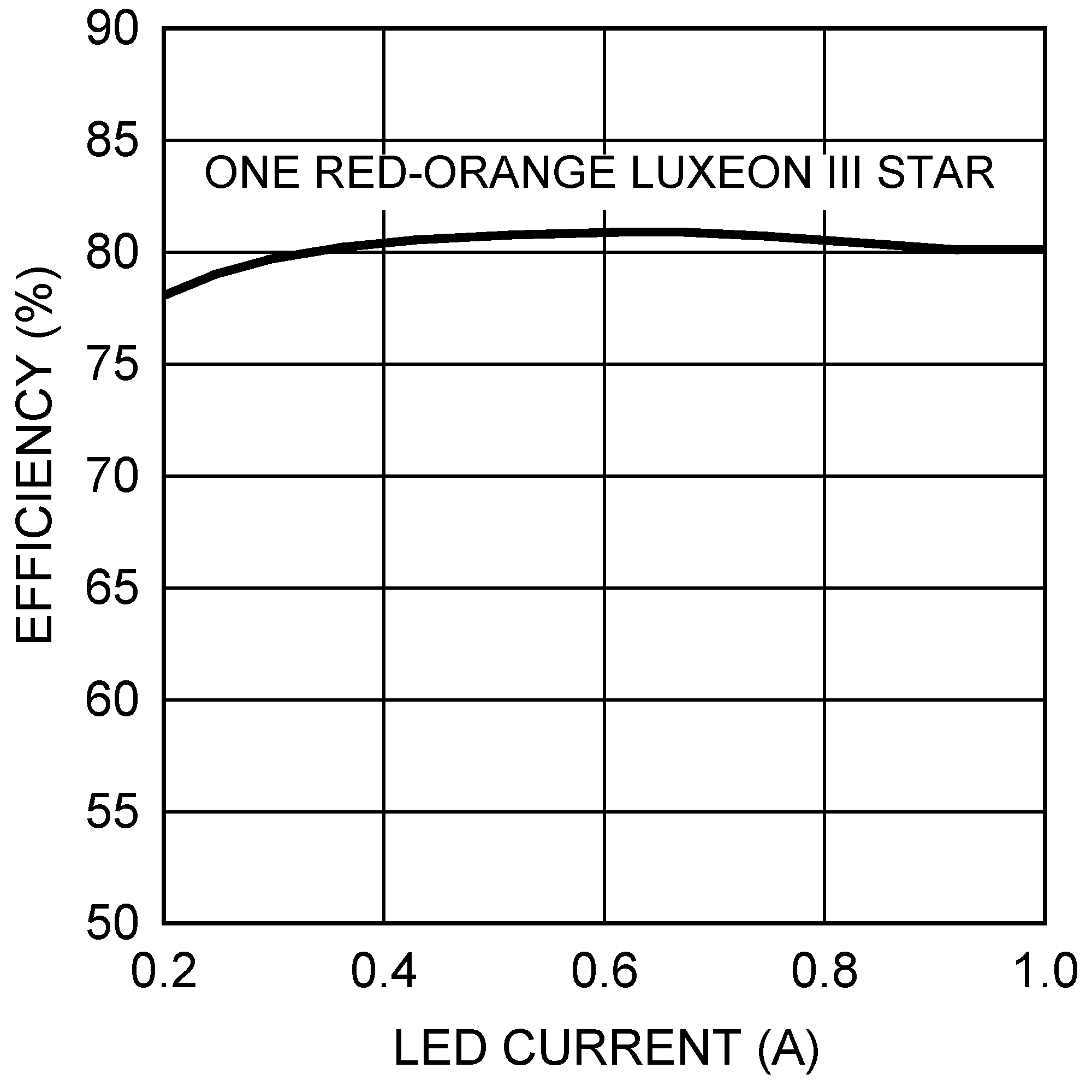
| VIN = 5 V |
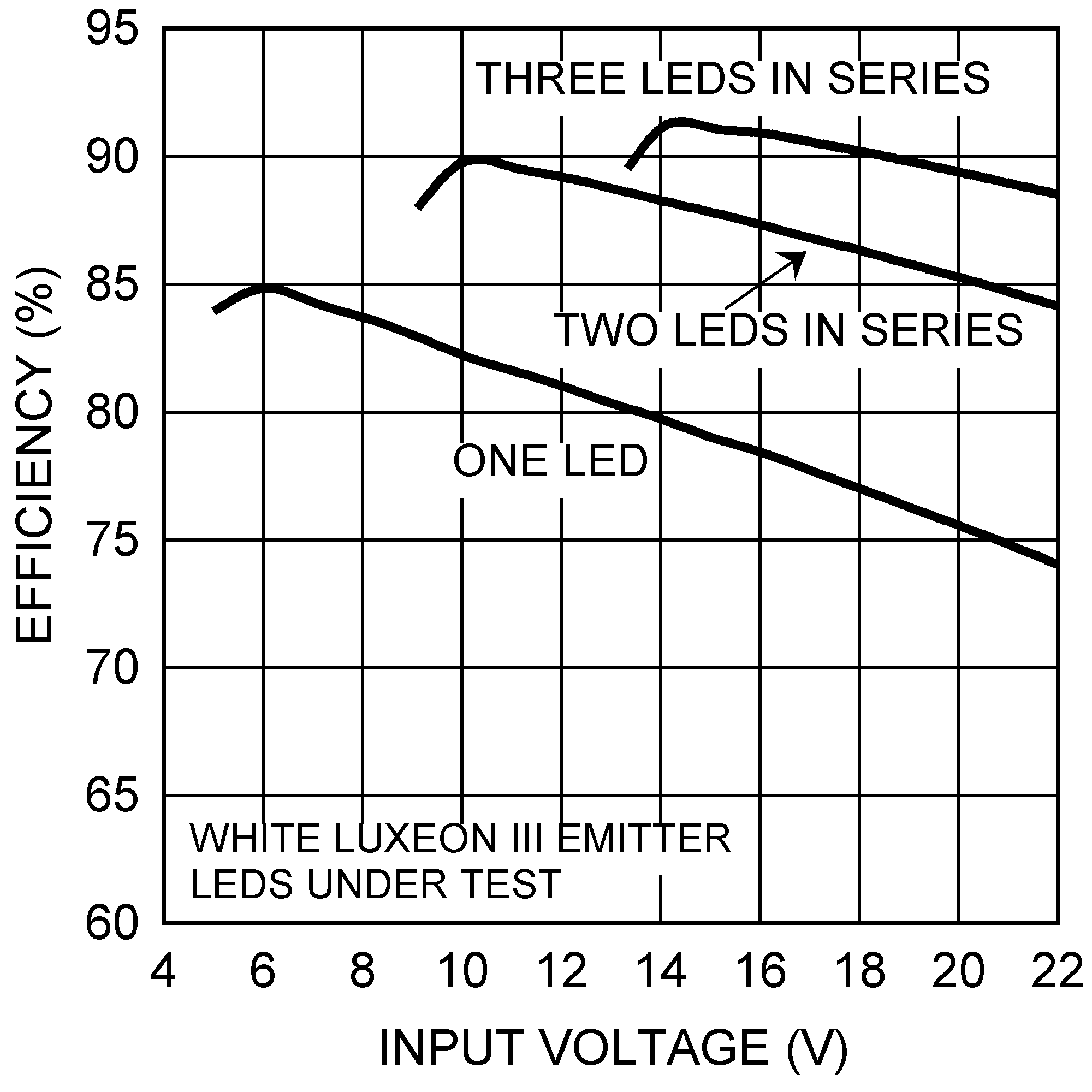
| IF = 0.7 A |
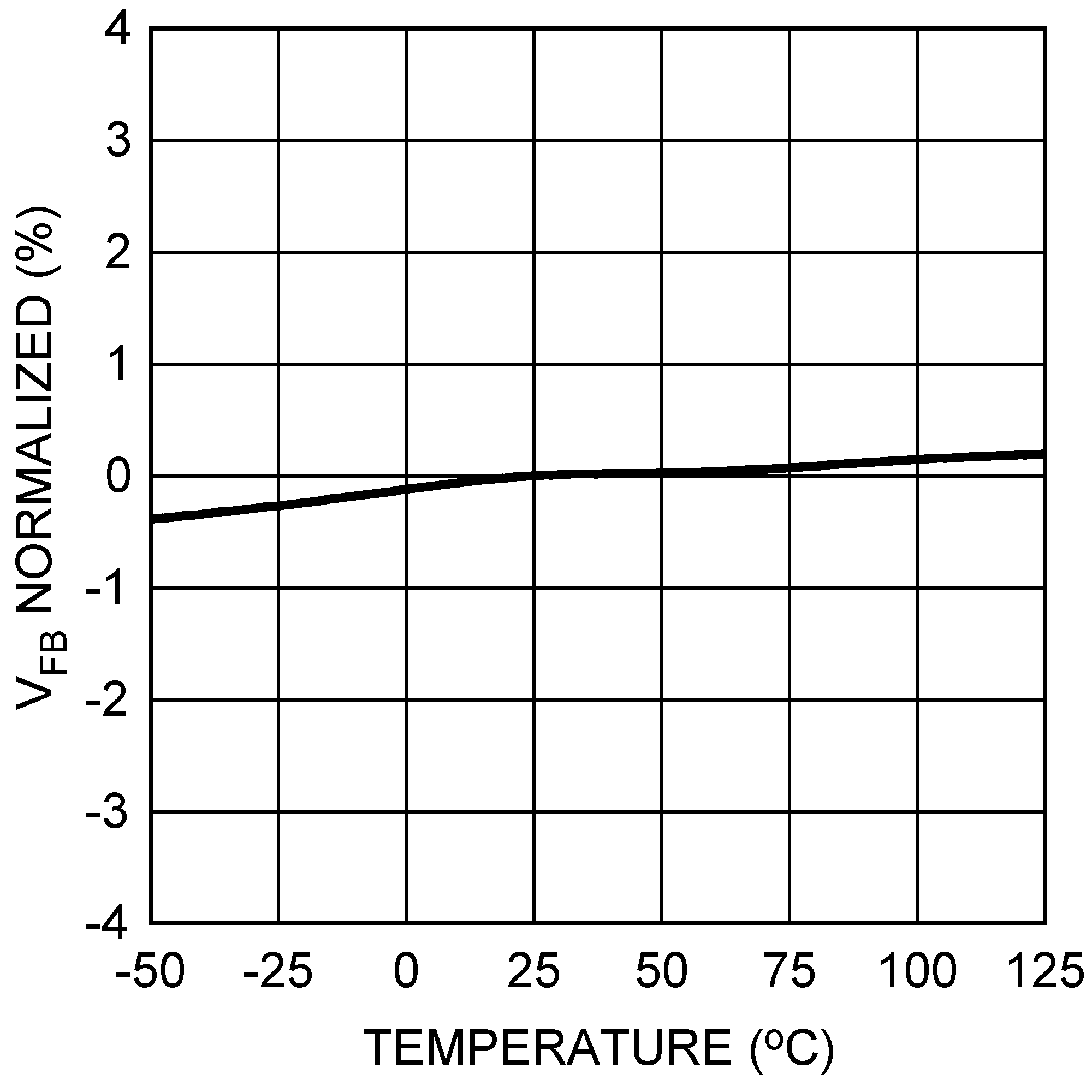
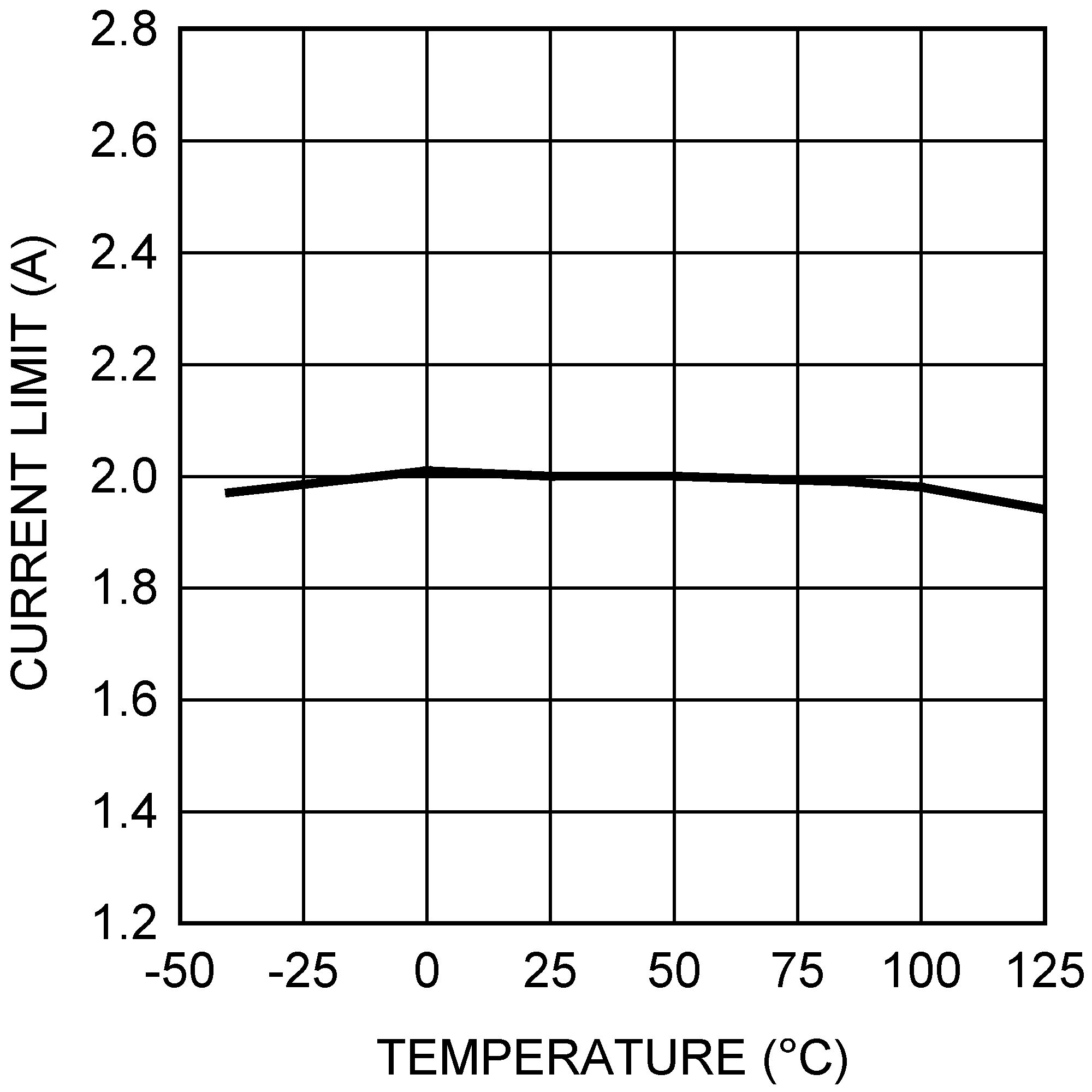
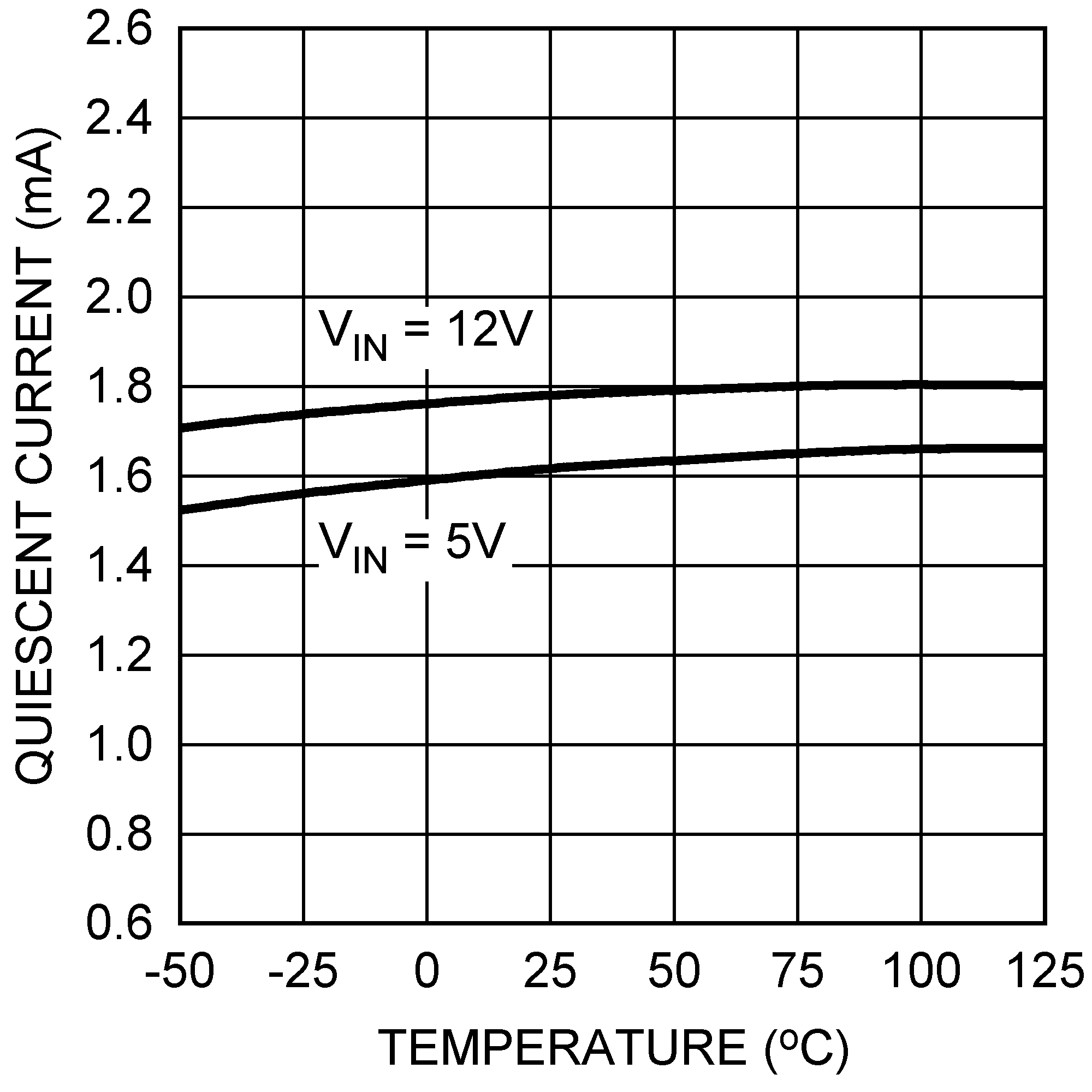
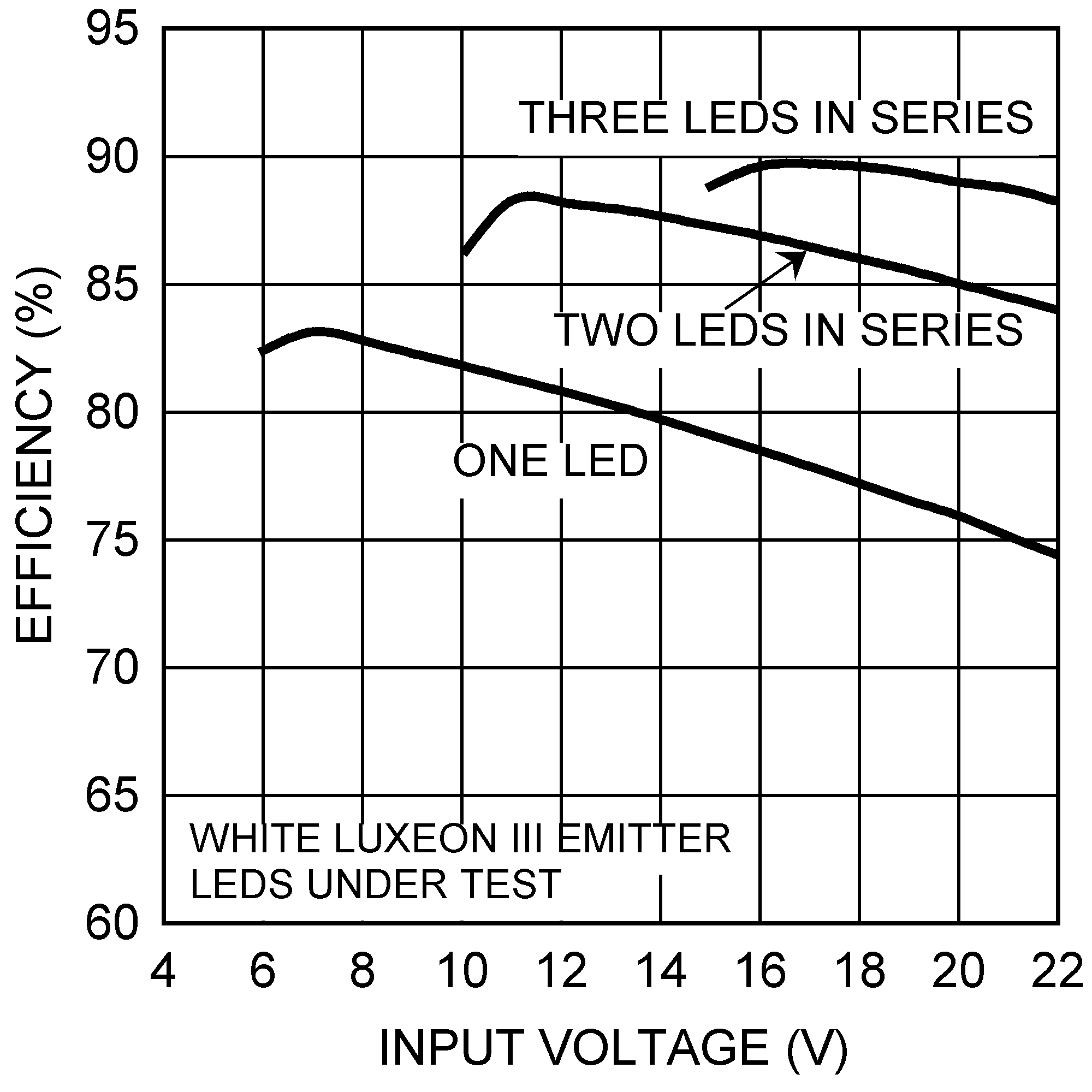
| IF = 1 A |
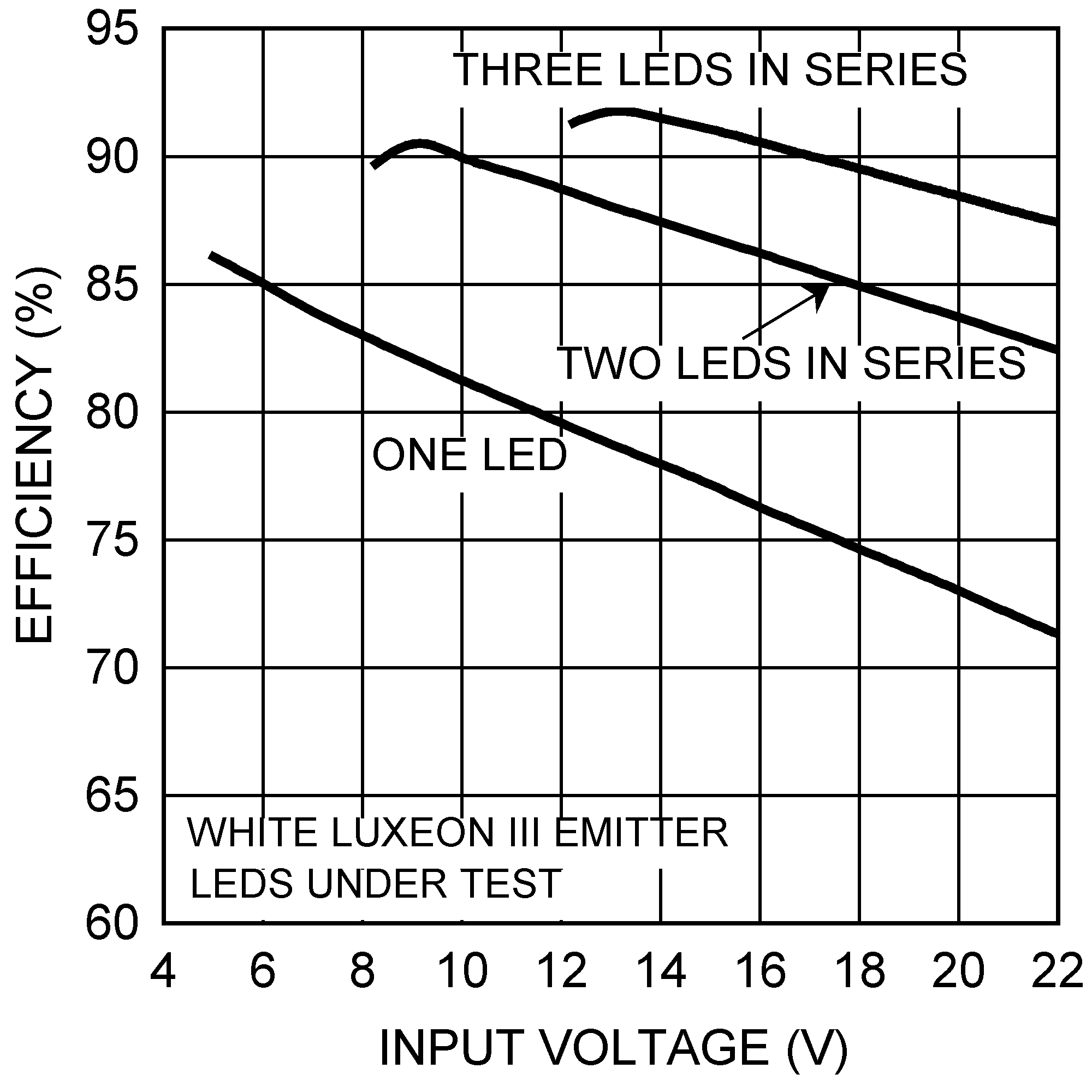
| IF = 0.35 A |
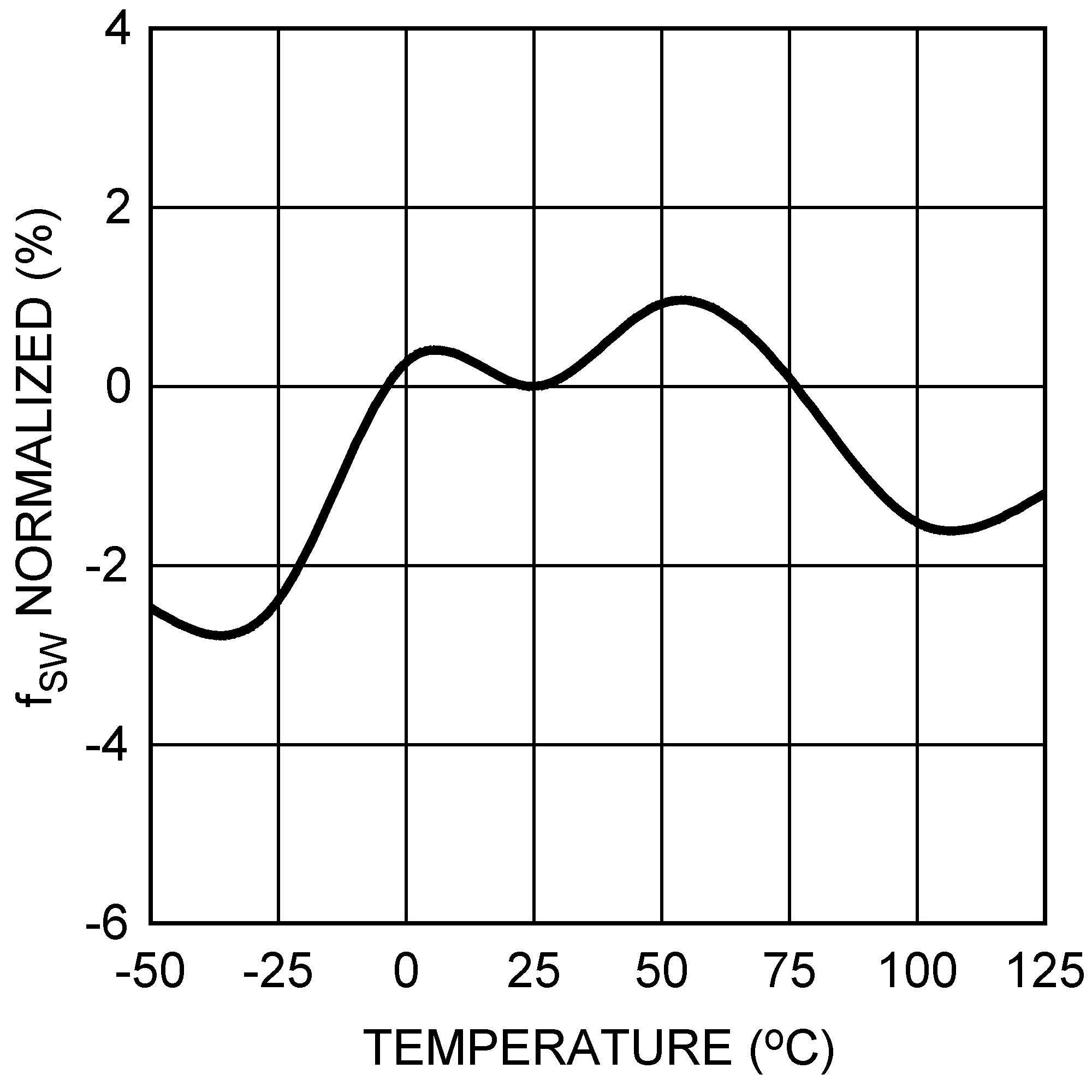
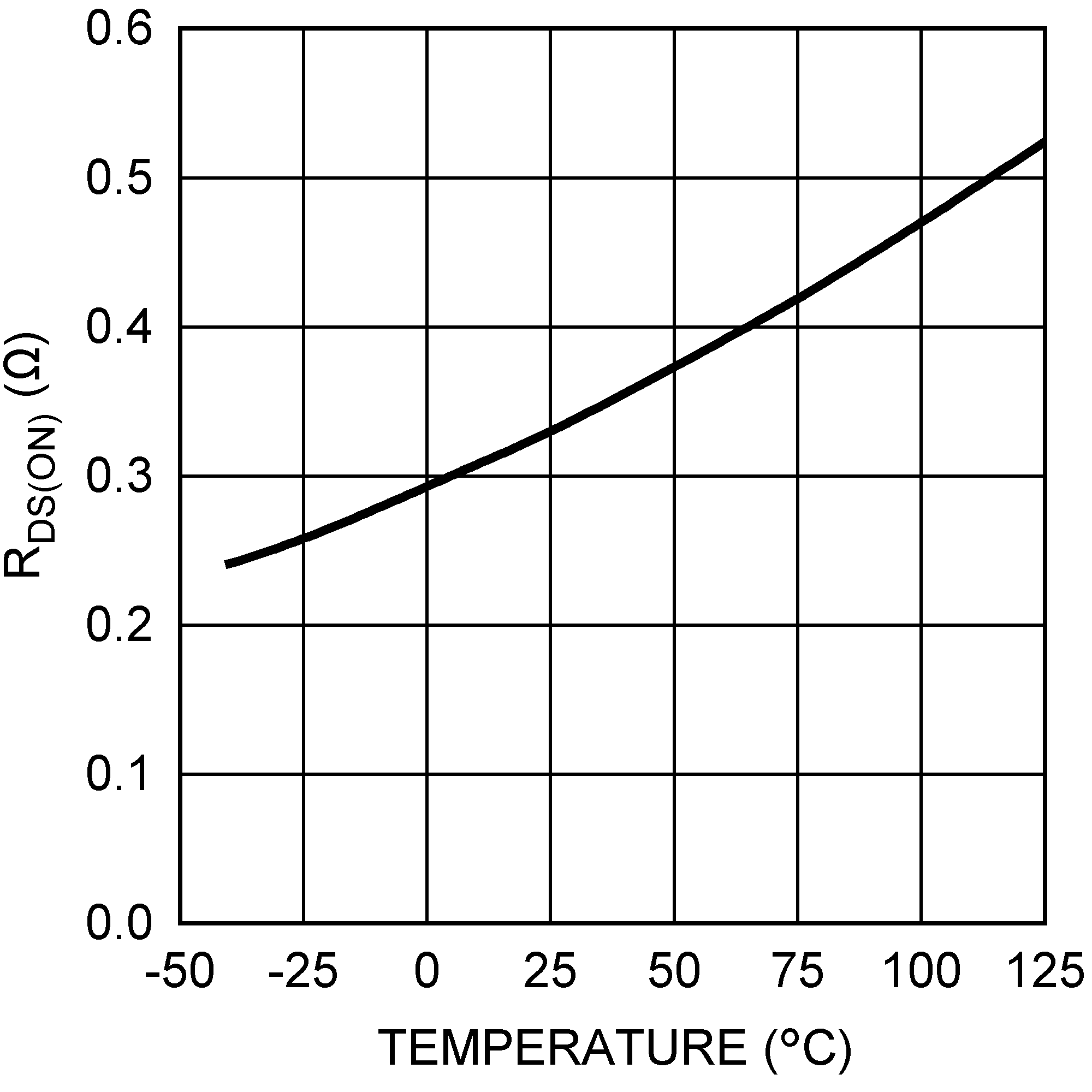
| VBOOST - VSW = 3 V |
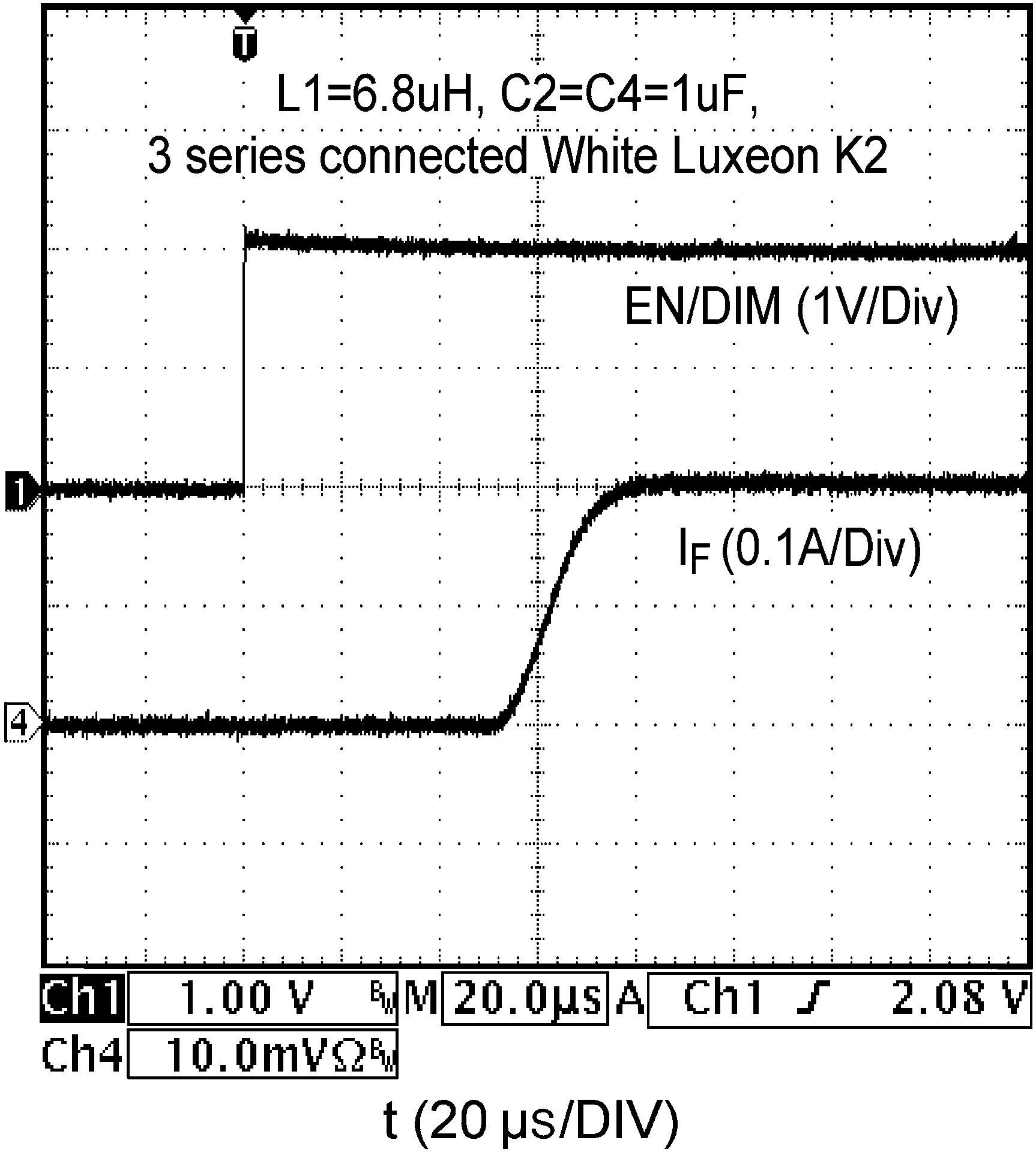
| VIN = 15 V | IF = 0.2 A |